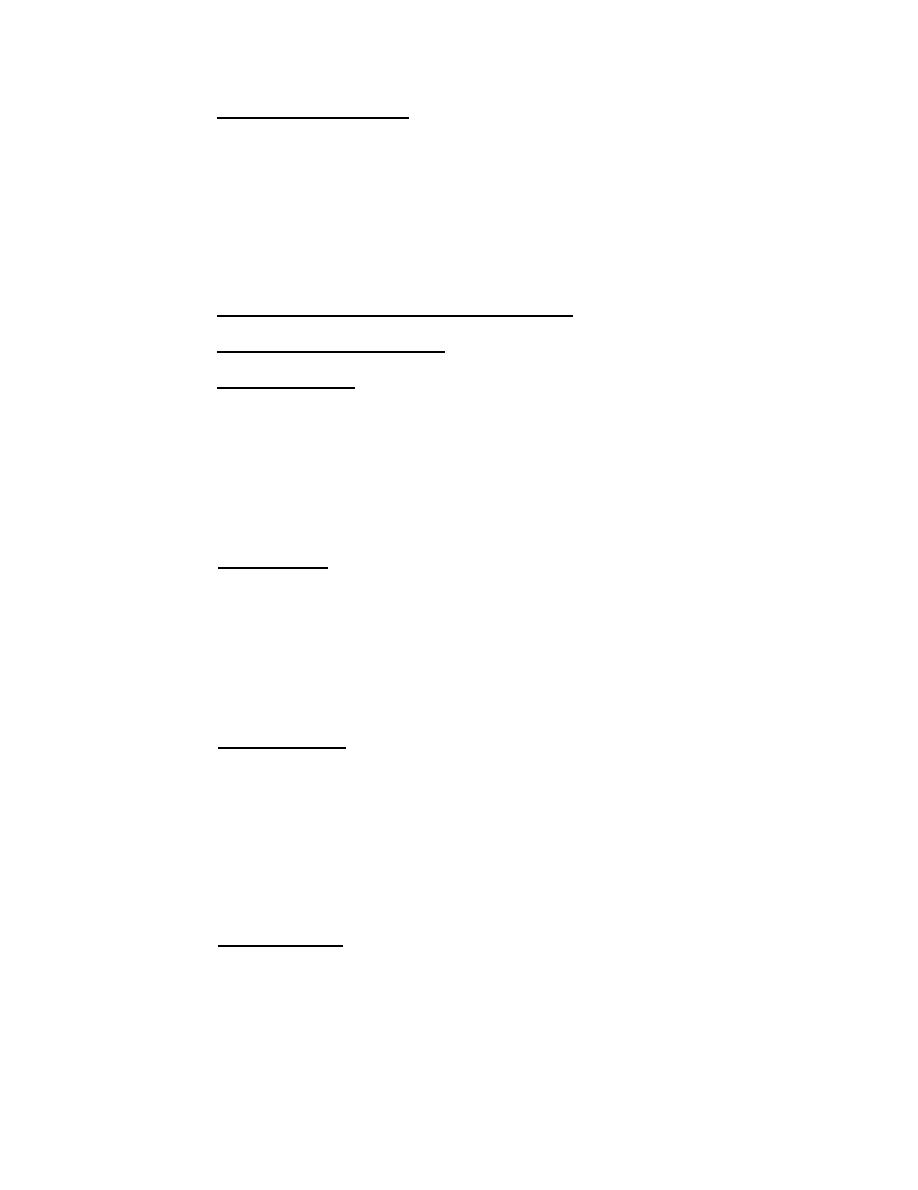
MIL-HDBK-1025/5
Consider the following environmental issues
Impact on Environment.
2.2.5
and concerns:
Disposal of dredge material.
a)
Water quality.
b)
Preservation of the ecology.
c)
Esthetics.
d)
Design Criteria for the Berthing System
2.3
Slip and Berth Clearances
2.3.1
Berth Clearance. Boats of 40 ft (12.2 m) or less for center-to-
2.3.1.1
center spacing of finger piers.
In the case of single berths, use the maximum boat width plus
a)
1 l/2 ft (.46 m) on each side plus the width of finger piers.
In the case of double berths, use twice the average boat width
b)
plus one foot at each finger plus 3 ft (.91 m) between boats plus the width of
finger piers.
Finger Piers
2.3.1.2
Fingers may be built inclined or perpendicular to headers.
a)
The latter orientation is preferred because of the simplicity of construction
and greater strength of junctions between fingers and headers.
Inclined fingers are generally used only where space
b)
restrictions limit the turning area opposite the slips or for alignment in the
direction of prevailing winds or water flow.
Fairway Widths.
Provide the following fairway widths between
2.3.1.3
finger ends:
For power craft, minimum 2 times the length of the longest
a)
craft served.
For sailboats, minimum 2 l/2 times the slip length.
b)
For 45 degree berthing, minimum 1 l/2 times the length of the
c)
longest boat served.
Mooring Layouts.
2.3.1.4
See Figure 3 and refer to DM-26.1 for mooring and berthing
a)
layouts and the type of mooring used in each case.
Layout A is not convenient for embarking alongside piers.
b)
Layout B is not suitable where a large tidal range prevails. Layout D
requires wider spacing between finger piers than Layout C. Layout E provides
11



 Previous Page
Previous Page
